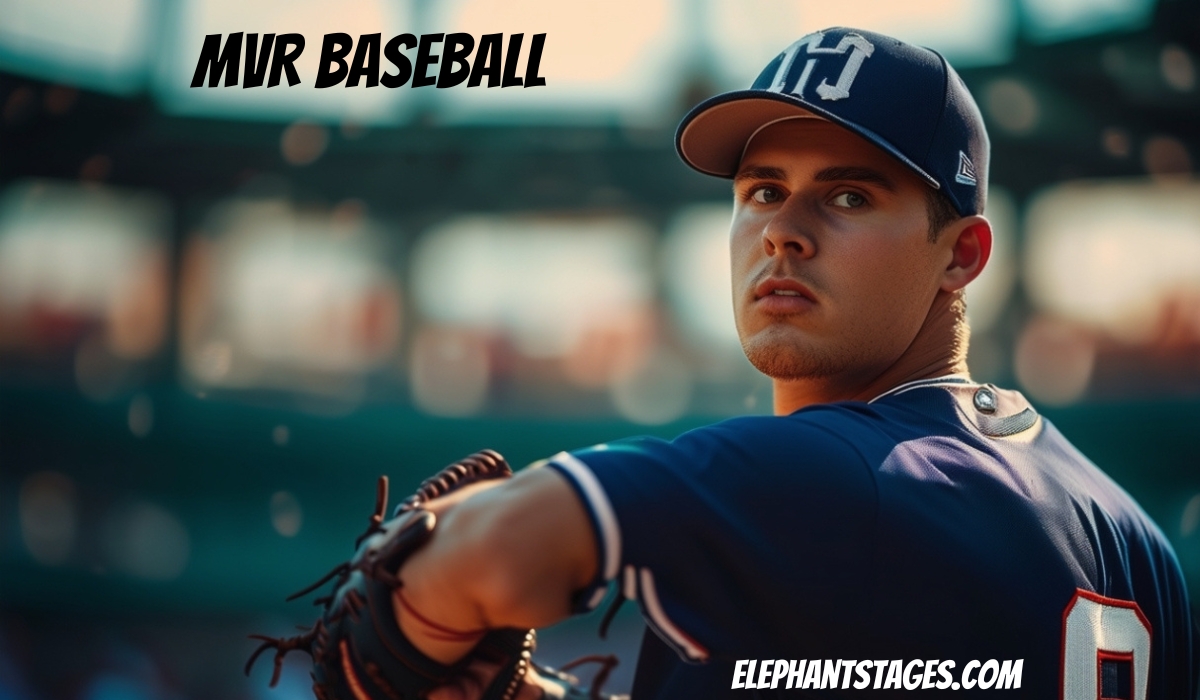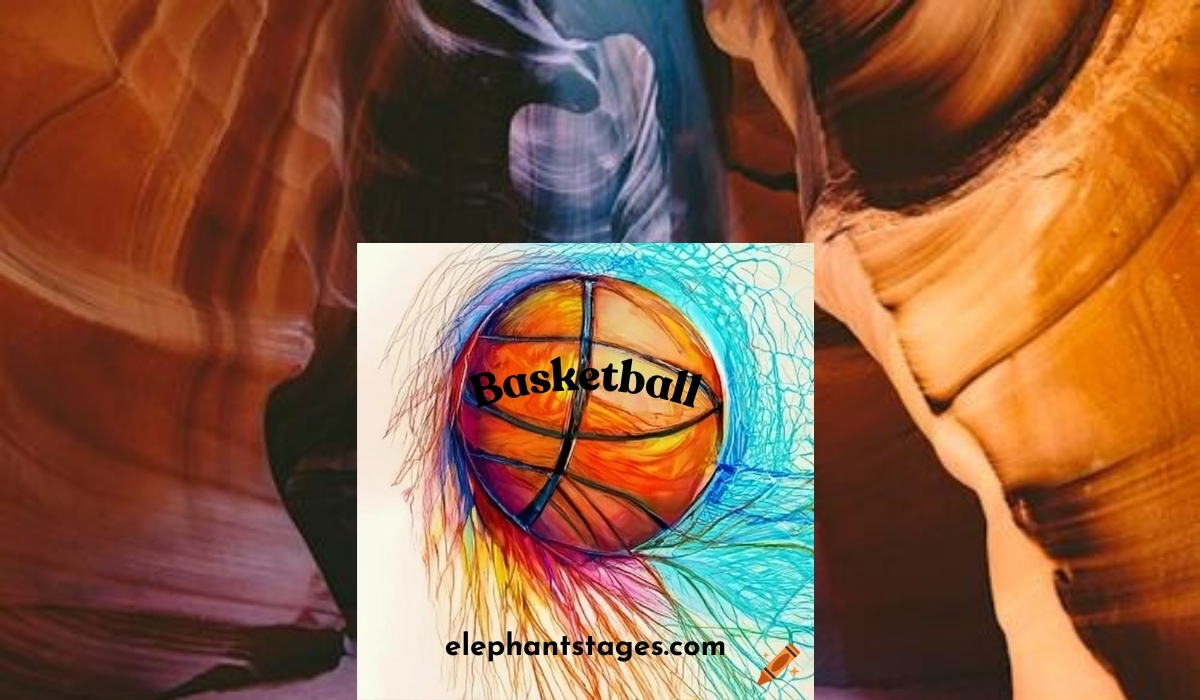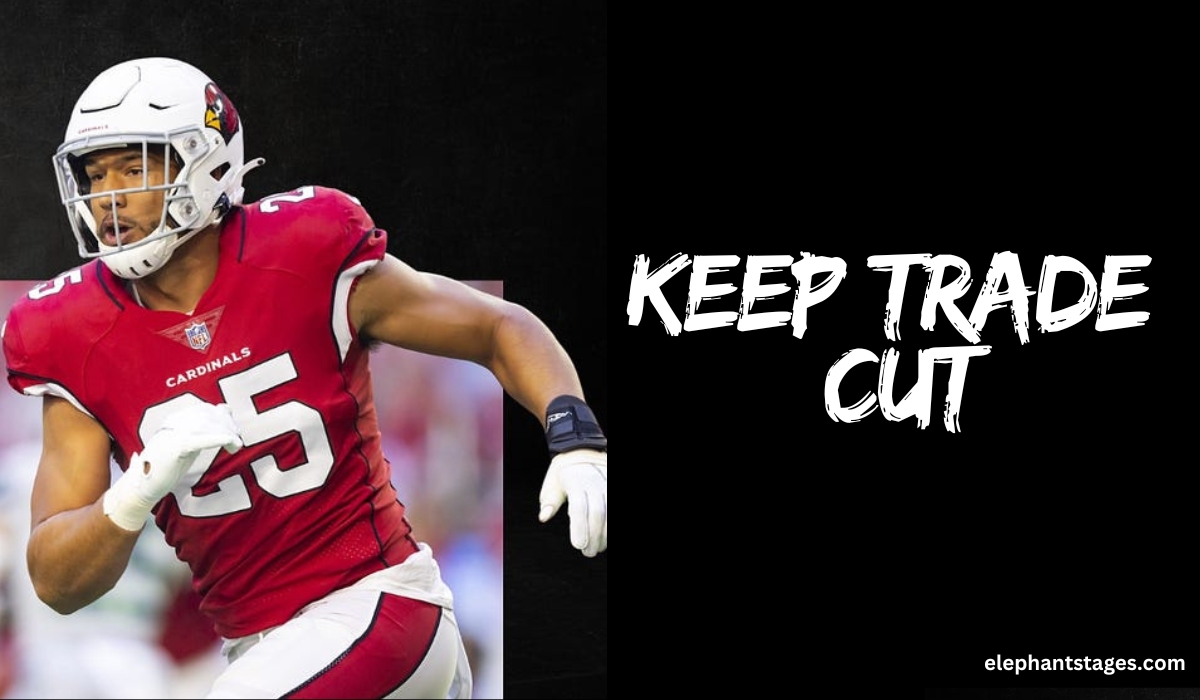Sports
What is MVR Baseball? Unveiling the Game’s Secret

Baseball, often referred to as America’s pastime, is a sport steeped in tradition and strategy. One of the more recent additions to the strategic landscape of the game is the concept of MVR, or “Mound Visits Remaining.” Despite its significance, MVR remains a somewhat mysterious term for many baseball enthusiasts and even some sports analysts. This comprehensive guide aims to demystify MVR, explaining its origin, rules, and implications for the pace of play in baseball.
Introduction MVR Baseball
MVR in baseball is a relatively new rule implemented to improve the game’s pace. The idea is simple: by limiting the number of mound visits that can occur during a game, Major League Baseball (MLB) hopes to streamline and speed up the action on the field. However, there’s a common misconception that MVR refers to something entirely different—vaccinations. In the context of baseball, MVR has nothing to do with health protocols but everything to do with game strategy and flow.
What Does MVR Stand For?
MVR stands for “Mound Visits Remaining.” This rule is designed to limit the frequency of trips to the pitcher’s mound by various team members, thereby making the game more engaging and less time-consuming. The primary purpose of the MVR rule is to improve the flow of the game by reducing unnecessary delays.
The Purpose of the Rule
The MVR rule was introduced as part of MLB’s broader initiative to speed up the game and enhance its appeal to modern audiences. Long criticized for its slow pace, baseball has seen numerous efforts to make games shorter and more exciting. Mound visits, often used to stall or strategize, were identified as one of the culprits behind lengthy games. By capping the number of visits, MLB aims to keep the action moving, ensuring that fans remain engaged.
Mound Visit Rules
Understanding the intricacies of the MVR rule requires a closer look at the specific guidelines governing mound visits. Here, we’ll break down the key aspects of the rule.
Number of Mound Visits Allowed
Currently, teams are allowed six mound visits per nine-inning game. This limit includes visits by the catcher, pitching coach, manager, and any other team personnel. Each time someone goes out to speak with the pitcher, it counts as a visit against the team’s allotted number.
Who Can Initiate a Mound Visit?
A mound visit can be initiated by various team members, including the catcher, pitching coach, manager, and in some cases, the pitcher himself. However, each visit is counted towards the team’s total, regardless of who initiates it. The strategic use of mound visits thus becomes a critical aspect of managing the game effectively.
Exceptions to the Rule
Not all mound visits are counted against the team’s total. There are specific exceptions where a visit does not count, including:
- Foul Tips: If a catcher goes to the mound after a foul tip to check on the pitcher, it doesn’t count as a visit.
- Injuries: Visits to check on an injured player are also exempt from the count.
- Equipment Issues: Visits to address equipment malfunctions, such as a broken glove, do not count.
Additional Visit Rule for Extra Innings
In games that go beyond the standard nine innings, teams are granted one additional mound visit for each extra inning. This provision ensures that teams have the necessary flexibility to manage their pitchers effectively during extended play.
Consequences of Reaching 0 MVR
One of the most crucial aspects of the MVR rule is the consequence of depleting all allowed visits. Once a team has used up its allotted mound visits, any subsequent visit requires the immediate replacement of the pitcher. This rule adds a layer of strategy, forcing managers to carefully consider each visit’s timing and necessity.
Replacing the Pitcher
If a team runs out of mound visits and needs to make another visit, the pitcher must be replaced. This requirement can have significant strategic implications, particularly in close games where every pitching change can alter the outcome.
Strategies for Managing MVR
Given the importance of managing MVR effectively, teams have developed various strategies to optimize their mound visits. These strategies often involve innovative communication methods and careful planning.
Wristbands and Hat Cards
To minimize the need for mound visits, many teams have adopted the use of wristbands and hat cards containing signs and signals. These tools allow catchers and pitchers to communicate more efficiently without the need for frequent visits.
Pre-Game Planning
Effective management of MVR often begins before the game even starts. Teams typically engage in extensive pre-game planning sessions where they discuss potential scenarios and outline specific strategies. This preparation can reduce the need for in-game visits, conserving MVR for critical moments.
In-Game Adjustments
During the game, managers and coaches must be adept at making real-time adjustments based on the unfolding action. This ability to adapt on the fly can be the difference between conserving mound visits and running out of them prematurely.
YOU MAY ALSO LIKE
Celebrating UConn Women’s Basketball: A Comprehensive Guide to The Uconn Boneyard
Conclusion
In summary, MVR is a crucial rule designed to improve the pace and flow of baseball games. By limiting mound visits, MLB aims to create a more engaging and streamlined experience for fans. While the rule presents challenges for teams, it also offers opportunities for strategic innovation.
As baseball continues to evolve, it’s likely that we’ll see further refinements to the MVR rule and the strategies employed to manage it. For now, understanding and mastering the intricacies of MVR can provide a significant competitive edge.
Whether you’re a baseball enthusiast or a sports analyst, keeping abreast of these developments is essential. And if you’re looking to dive deeper into the world of baseball strategy, why not explore more of our insightful content? Stay tuned for more expert analyses and updates.
Remember, the next time you hear the term “MVR” in a baseball broadcast, you’ll know it’s all about the mound visits remaining—an essential element in the ever-evolving game of baseball.
Frequently Asked Questions
1. What is the purpose of the Mound Visit Rule (MVR) in MLB?
The primary purpose of the MVR is to speed up the game by limiting the number of mound visits allowed, thereby reducing unnecessary delays.
2. How many mound visits are allowed in a nine-inning MLB game?
Teams are allowed six mound visits per nine-inning game, which includes visits by the catcher, pitching coach, manager, and other team personnel.
3. Are there any exceptions to the MVR?
Yes, exceptions include foul tips, injuries, and equipment issues, which do not count against the team’s allotted number of mound visits.
4. What happens if a team runs out of mound visits?
If a team exceeds its allotted visits, any subsequent visit requires the immediate replacement of the pitcher.
5. How do teams manage their mound visits effectively?
Teams use strategies like pre-game planning, in-game adjustments, and communication tools such as wristbands and hat cards to manage mound visits effectively.
Sports
The Ultimate Guide to Finding the Perfect Fit for Women’s Pickleball Shoes

Are you struggling to find the right women’s pickleball shoes?
Picking the perfect pair can make a huge difference in your game. Discover how to choose the best shoes that will enhance your performance on the court.
Keep reading to learn more and get ready to step up your game!
Assess Your Court Surface
Different pickleball courts have different surfaces. The type of court you play on will affect which shoes are best.
Hard courts, such as concrete, need shoes with a durable sole. These shoes help protect your feet and give you enough grip to move quickly.
For clay or grass courts, you need shoes with better traction. They help you keep your balance while playing.
Knowing your court surface helps you pick the right pickleball shoes for women. This can boost your game and keep your feet safe. Always choose shoes that match your court type.
Prioritize Comfort
Comfort is key when picking your pickleball shoes. Your shoes should feel good when you wear them. If your shoes are too tight or too loose, you could hurt your feet or get blisters.
Look for shoes with soft insides and good support. This helps keep your feet comfortable during long games. Make sure the shoes have a good fit around your toes and heels.
You should be able to move your toes easily. A good pair of shoes can make a big difference in how you play the game. If you don’t know where to start looking, you can check out websites like https://novelship.com.
Consider Shoe Weight
The weight of your pickleball shoes is very important. Shoes that are too heavy can slow you down. Look for shoes that feel light on your feet. Lighter shoes help you move faster and feel less tired.
Make sure the shoes still give you enough support. You don’t want shoes that are too thin or flimsy. Good pickleball shoes balance light weight with strong support.
Check the shoe weight before you buy. Light shoes can help you play better and keep your feet feeling good.
Look for Durability
Durability matters when picking the best pickleball shoes. You want shoes that will last a long time. Good shoes made of strong materials can handle the wear and tear of many games.
Check the sole of the shoe. It should be thick and strong. The upper part of the shoe should also be well-made.
Stitching should be tight and neat. Durable shoes save you money because you won’t need to buy new ones often.
Check for Proper Fit
Getting the right fit is very important. Your pickleball shoes should not be too tight or too loose. Shoes that fit well can help you move better on the court.
Make sure your toes have enough room to wiggle. The heel should stay in place and not slip.
Try to walk and run a bit when you try on new shoes. This way, you can see if they feel good. Good-fitting shoes help you play better and keep your feet safe from injury.
Find the Best Fit for Women’s Pickleball Shoes Today
Finding the right women’s pickleball shoes can boost your game and keep you comfortable on the court. Take the time to try on different pairs and choose the ones that feel best.
With the right shoes, you’ll play better and enjoy the game more. So get out there and find your perfect pair today!
Did you find this article helpful? Then check out our blog for more advice, tips, and insights!
Sports
Drawing:Cul23ybyzfm= Basketball – A Creative Guide for Basketball Enthusiasts and Artists

Introduction Drawing:Cul23ybyzfm= Basketball
There’s something magical about the intersection of sports and art. When you capture the essence of basketball on paper, it’s not just about drawing figures or scenes; it’s about conveying the energy, motion, and excitement of the game. Whether you’re a basketball enthusiast, an artist looking to explore new themes, or a sports blogger wanting to add a creative touch to your content, basketball-themed art offers endless possibilities. In this guide, we’ll walk you through everything you need to know to create stunning basketball drawings that leap off the page.
Materials and Tools
Essential Tools for Basketball Art
Before you start drawing, it’s important to gather the right materials. Quality tools can make a significant difference in the outcome of your artwork. Here are some essentials to get you started:
- Quality Paper: Opt for a sketchbook or drawing pad with smooth, thick paper. This will help handle the shading and detailing without bleeding or tearing.
- Pencils: A range of pencils from H (hard) to B (soft) will allow you to create different shades and textures. A 2B pencil is great for general sketching, while a 6B pencil can be used for deep shadows.
- Markers and Pens: Fine liners and markers are excellent for outlining and adding bold details. Brands like Micron and Copic offer a variety of tips and vibrant colors.
Specialized Materials for Dynamic Action Scenes
Capturing the dynamic energy of basketball requires some specialized tools:
- Blending Stumps: These help in creating smooth transitions between shades and adding depth to your drawings.
- Colored Pencils: To add vibrancy and realism, colored pencils can be used for uniforms, the basketball, and even the court.
- Digital Tools: If you prefer digital art, tools like a graphic tablet and software like Procreate or Adobe Illustrator can offer endless possibilities for creating intricate designs and animations.
Depicting Movement and Action
Tips for Capturing the Fluidity and Energy
Drawing static figures is one thing, but capturing the fluidity and energy of basketball is another challenge entirely. Here are some tips:
- Study Real Games: Watch live games or recordings to observe how players move. Pay attention to body language, the bend of the knee during a jump, or the angle of the arm while shooting.
- Quick Sketches: Practice quick, rough sketches to capture motion. These don’t need to be detailed but should focus on the general movement and flow.
- Gesture Drawing: Focus on the overall action rather than the details. Use loose lines to sketch the basic shapes and poses of players in action.
Techniques for Drawing Various Basketball Moves
Dribbling
- Focus on the Hands and Ball: The hand positioning and the way the ball interacts with them are crucial. Draw the ball slightly deformed to convey the impact and motion.
- Legs and Feet: One foot should be forward, and the other slightly back, showing the player in mid-motion.
Shooting
- Body Angles: Capture the tension in the player’s body as they prepare to shoot. The arm should be extended, and the fingertips should be just touching the ball.
- Facial Expression: A focused expression adds realism and emotion to the shot.
Dunking
- Exaggeration: Don’t hesitate to exaggerate the jump height and the stretch of the player’s body to emphasize the dramatic nature of a dunk.
- Movement Lines: Add lines around the player to suggest the swift motion and energy of the dunk.
Infusing Realism with Shading and Detail
Guide on Using Shading to Create Depth and Realism
Shading is what brings your drawing to life. Here’s how you can master it:
- Light Source: Determine where your light is coming from. This will help you understand where the shadows and highlights should be.
- Layering: Start with light shades and gradually build up to darker ones. This creates a more natural look.
- Contrast: Use high contrast to make key elements stand out. A well-shaded basketball, for instance, will draw immediate attention.
Tips for Adding Intricate Details
Facial Features
- Eyes and Expression: The eyes are the focal point of any face. Spend extra time making them detailed and expressive.
- Sweat and Texture: Small details like sweat or texture on the uniform can add a layer of realism.
Uniform and Accessories
- Fabric Folds: Pay attention to how fabric folds and creases, especially around joints and during movement.
- Logos and Numbers: Adding the team’s logo or the player’s number can make your drawing more authentic and recognizable.
- YOU MAY ALSO LIKE
- Celebrating UConn Women’s Basketball: A Comprehensive Guide to The Uconn Boneyard
Conclusion
Creating basketball-themed art is not just an exercise in drawing; it’s a means of expressing the dynamism and passion of the game. By using the right materials, capturing the fluidity of movement, and adding realistic shading and details, you can create artwork that resonates with viewers. We hope this guide has equipped you with the knowledge and inspiration needed to start your basketball art journey.
Remember, like any skill, practice and patience are key. Keep drawing, keep experimenting, and most importantly, enjoy the process. If you’re proud of your artwork, share it with our community. We’d love to see your unique take on capturing the spirit of basketball.
Frequently Asked Questions
1. What materials do I need for basketball-themed art?
You’ll need quality paper, a range of pencils, markers, blending stumps, colored pencils, and, optionally, digital tools.
2. How can I capture movement in basketball drawings?
Study real games, practice quick sketches, and focus on gesture drawing to effectively depict fluidity and energy.
3. What shading techniques help create depth?
Determine your light source, layer shades gradually, and use contrasting highlights and shadows to enhance realism.
4. How should I depict specific basketball moves like dunking?
Exaggerate the jump height and use movement lines to convey energy. Capture body tension for more dynamic poses.
5. Are there any tips for adding details to facial expressions?
Spend extra time on the eyes and expressions, and include small features like sweat on the face or texture on the uniform.
Sports
Mastering Dynasty Fantasy Football with Keep Trade Cut Strategy

Are you ready to take your Dynasty Fantasy Football game to the next level? Whether you’re new to dynasty leagues or a seasoned veteran, understanding the Keep Trade Cut (KTC) strategy can significantly enhance your team’s performance. This blog post will guide you through the intricacies of Keep Trade Cut, helping you build a competitive team year after year. Let’s kick off this masterclass!
What is Dynasty Fantasy Football?
The Basics
Dynasty Fantasy Football is a long-term commitment that mirrors real NFL franchises. Unlike traditional redraft leagues where you draft a new team each year, in dynasty leagues, you retain most of your roster from season to season. This means long-term planning and player development are crucial elements.
The Importance of Long-Term Planning
In dynasty leagues, it’s not just about winning this season; it’s about setting your team up for sustained success. You’ll need to consider factors like player age, contract lengths (if applicable), and team situations. This makes every decision—from draft picks to trades—more impactful.
The Keep Trade Cut Philosophy
Core Concept
The Keep Trade Cut (KTC) approach is a fundamental strategy for managing a dynasty roster. Essentially, Keep Trade Cut involves deciding whether to:
- Keep players on your roster.
- Trade them for assets.
- Cut them to make room for new talent.
Mastering this philosophy helps optimize your team’s success by making informed decisions based on player value, performance, and future potential.
Benefits of Mastering Keep Trade Cut
- Build a Competitive Team: Year after year, Keep Trade Cut helps you maintain a strong roster.
- Navigate Rookie Drafts and Free Agency: Enhance your ability to pick valuable rookies and free agents.
- Understand Player Value Fluctuations: Know when to hold onto a player and when to move on.
- Maximize Trade Opportunities: Propose fair and valuable deals that benefit both parties.
Who Should Read This Guide?
This guide is perfect for Dynasty Fantasy Football players of all experience levels. New players can learn the fundamentals of Keep Trade Cut, while experienced players can refine their decision-making process. Even casual players will find valuable insights that can improve their game.
Core Principles of Keep/Trade/Cut
Player Evaluation: The Foundation of Keep Trade Cut
Evaluating players goes beyond just raw statistics. Here are key metrics to consider, summed up as TOAST (Talent, Opportunity, Age, Situation, Athleticism).
Talent
Understanding a player’s natural ability and potential for development is crucial. Look for players who show exceptional skills and have the potential to grow in their careers.
Opportunity
Analyze a player’s role within their team’s offense or defense. Players with more opportunities to touch the ball or make plays are generally more valuable.
Age
The impact of age on player performance varies by position. For example, running backs often peak earlier than wide receivers. Keep this in mind when evaluating your roster.
Situation
Consider the team’s overall competitiveness, coaching schemes, and quality of the offensive or defensive line. A talented player in a poor situation may not perform as well.
Athleticism
Assess physical skills relevant to a player’s position, such as speed, agility, and catching radius. These attributes can make a significant difference in a player’s effectiveness.
The Keep Decision
Ideal Candidates to Keep
Young, high-potential players at valuable positions (RB1s, WR1s, elite QBs, TEs) are strong candidates to keep. These players are likely to contribute significantly to your team’s success.
Contract Length and Salary Cap
In leagues with salary caps, consider the length of player contracts and their financial impact. Keeping a high-value player with a manageable contract can be advantageous.
Roster Depth
Examine the depth of your roster at each position. If you have a surplus of talent in one area, it might be wise to trade some players for assets in weaker areas.
The Trade Decision
Identifying Ideal Trade Targets
Look for players with high upside who fit your team’s needs. Trading for young talent or draft picks can help you build for the future.
Creating Win-Win Trades
Ensure that your trade proposals offer fair value to both parties. Building trust with other league members can make future trades easier to negotiate.
Trade Scenarios
Different trade scenarios include acquiring young talent, consolidating positions, or acquiring draft picks. Tailor your strategy to your team’s specific needs and long-term goals.
The Cut Decision
Clear Cut Candidates
Identify players who are clear-cut candidates for release. These might include aging veterans with declining performance, players with limited opportunity, or those with significant injury concerns.
Objective Decision-Making
It’s essential to make objective decisions, even if you have an emotional attachment to certain players. This will help you maintain a competitive roster.
Stash Candidates
Consider “stashing” young players with upside who might be buried on depth charts but could become valuable in the future. These players can be long-term assets for your team.
Advanced Keep Trade Cut Strategies
Dynasty Rookie Drafts
Rookie drafts are a critical component of building a successful dynasty team. Here’s how to approach them effectively.
Pre-Draft Preparation
Research rookies thoroughly, understand your team needs, and utilize draft rankings. This preparation will help you make informed decisions during the draft.
Drafting Strategies
Target elite prospects at skill positions in the early rounds and look for value picks in the later rounds. Consider rookie landing spots and team situations when making your selections.
Dynasty Free Agency
Free agency is another avenue for improving your team. Here’s how to make the most of it.
Identifying Undervalued Players
Look for undervalued players or potential breakout candidates. Monitoring waiver wires and staying informed about player performance can help you find these diamonds in the rough.
Risks of Free Agency Pickups
Be aware that not all free agency pickups will pan out. Some players may not see significant playing time, so prioritize pickups based on your roster needs and their opportunity.
Contract Extensions & Salary Cap Management
For leagues with contract extensions and salary caps, managing these aspects is crucial for long-term success.
Impact on Salary Cap
Understand how contract extensions affect your salary cap and future roster flexibility. Making strategic decisions in this area can give you a competitive edge.
Strategies for Extensions
Consider extending high-value players with manageable contracts and releasing those who are overpaid relative to their performance. This will help you maintain a balanced and competitive roster.
Conclusion
By mastering the Keep/Trade/Cut strategy, you can significantly enhance your Dynasty Fantasy Football team’s performance. Player evaluation, informed decision-making, and strategic planning are the keys to long-term success. Whether you’re a new player or an experienced veteran, applying these principles will help you build a competitive team year after year.
Don’t wait to take your game to the next level. Start implementing the Keep Trade Cut strategy today and see the difference it makes. Happy drafting!
Explore more strategies and tips on our website, and join our community of dedicated fantasy football enthusiasts. Together, let’s dominate the league!
Frequently Asked Questions (FAQs)
1. What is the Keep/Trade/Cut (Keep Trade Cut) strategy in Dynasty Fantasy Football?
The Keep Trade Cut strategy involves evaluating players to decide whether to keep, trade, or cut them based on factors like age, performance, and potential.
2. How do you evaluate players for the Keep/Trade/Cut strategy?
Consider factors such as opportunity, age, situation, and athleticism when evaluating players for your dynasty team.
3. What are some key tips for making good trade decisions?
Identify high-upside trade targets, ensure that trades provide fair value to both parties, and tailor trade scenarios to your team’s needs.
4. How should I approach rookie drafts in a dynasty league?
Prepare thoroughly by researching rookies, understanding team needs, and using draft rankings. Target elite prospects early and value picks later.
5. How can salary cap management impact my dynasty team’s success?
Effective salary cap management involves extending high-value players, releasing overpaid ones, and making strategic contract decisions for long-term success.
-

 News3 months ago
News3 months agoWhat Are the Biggest Challenges in Marine Construction Projects in Australia?
-

 Health4 months ago
Health4 months agoUnderstanding Ftmç: Gender-Affirming Surgery
-

 Fashion3 months ago
Fashion3 months agoAttractive Beach Dresses: Elevate Your Look with These Ideas
-

 Tech3 months ago
Tech3 months agoAiyifan: Unveiling the Genie of Technological Revolution
-

 Business3 months ago
Business3 months agoHow Professional Concrete Cleaning Wins Repeat Business
-

 Tech4 months ago
Tech4 months agoThe Ultimate Guide to the Geekzilla Podcast: Diving into the Heart of Geekdom
-

 Pets2 months ago
Pets2 months agoPawsitively Perfect: The Types of Dog Harness Bundle for Your Furry Friend
-

 Health3 months ago
Health3 months agoDesk Job Dilemma: Tips for Back Pain Relief
